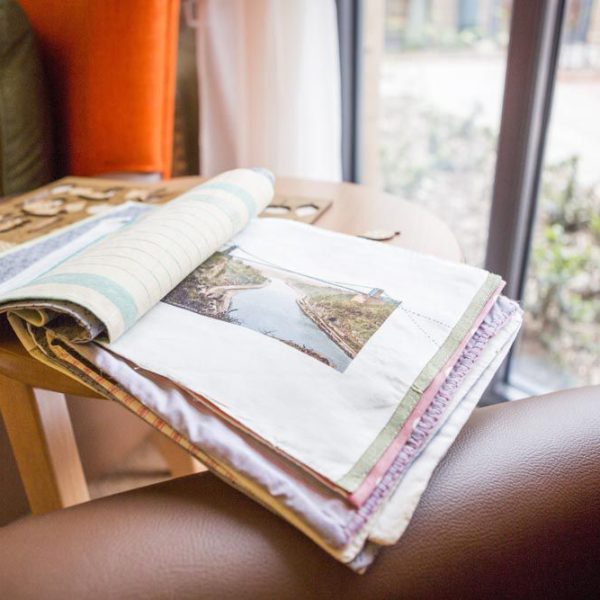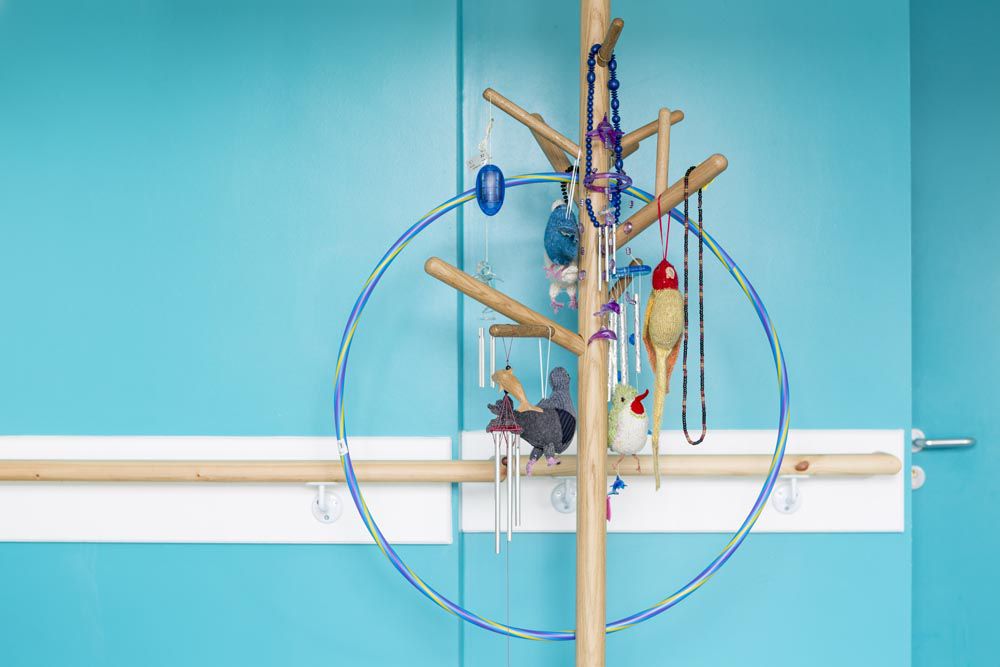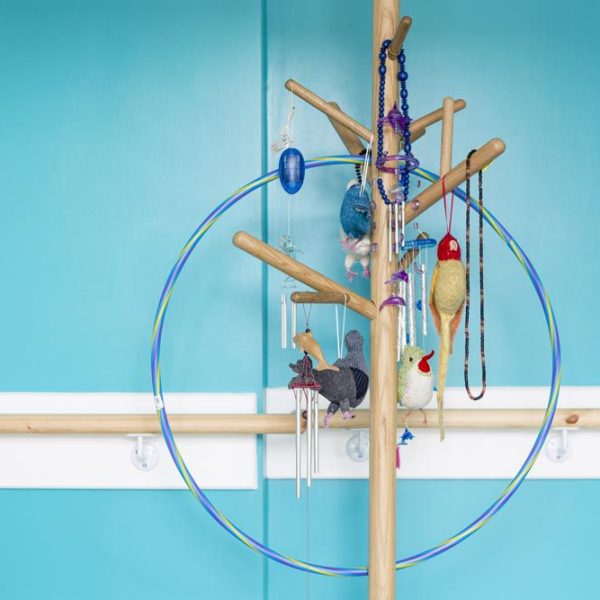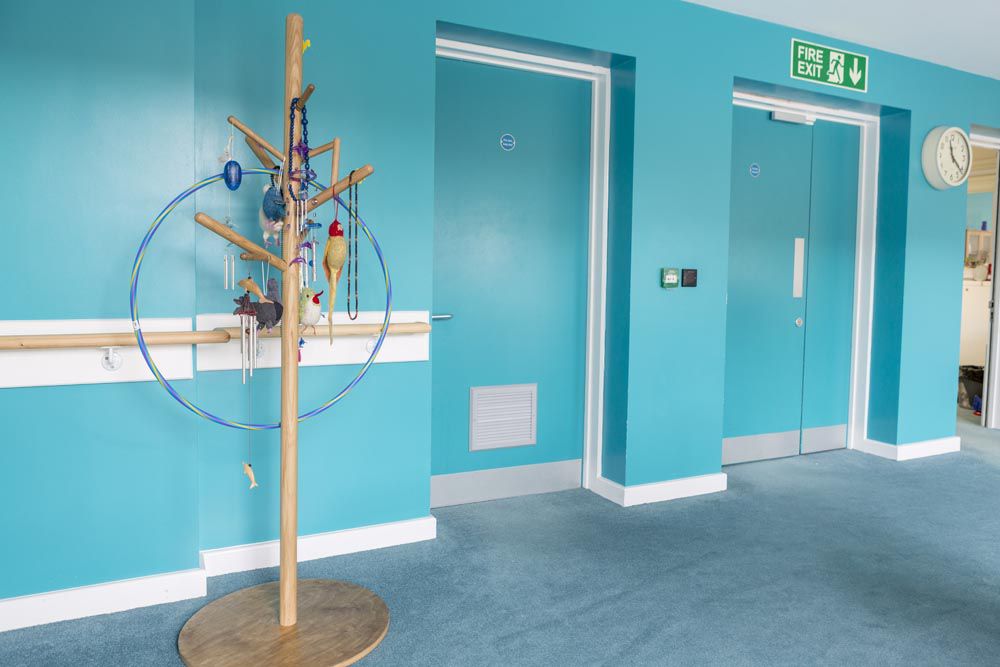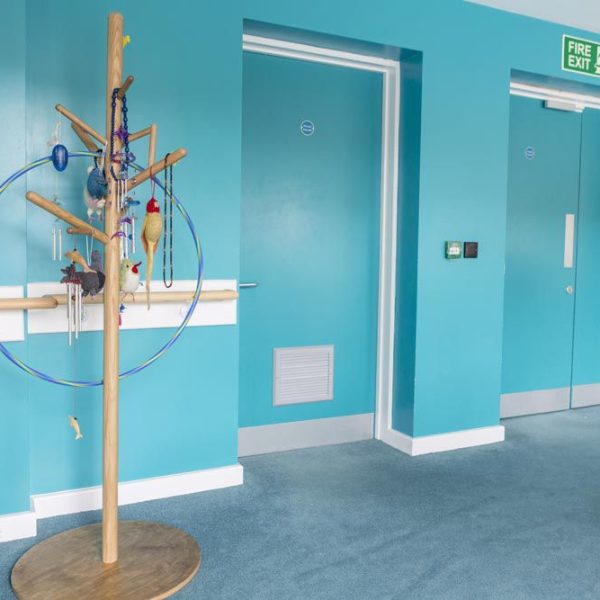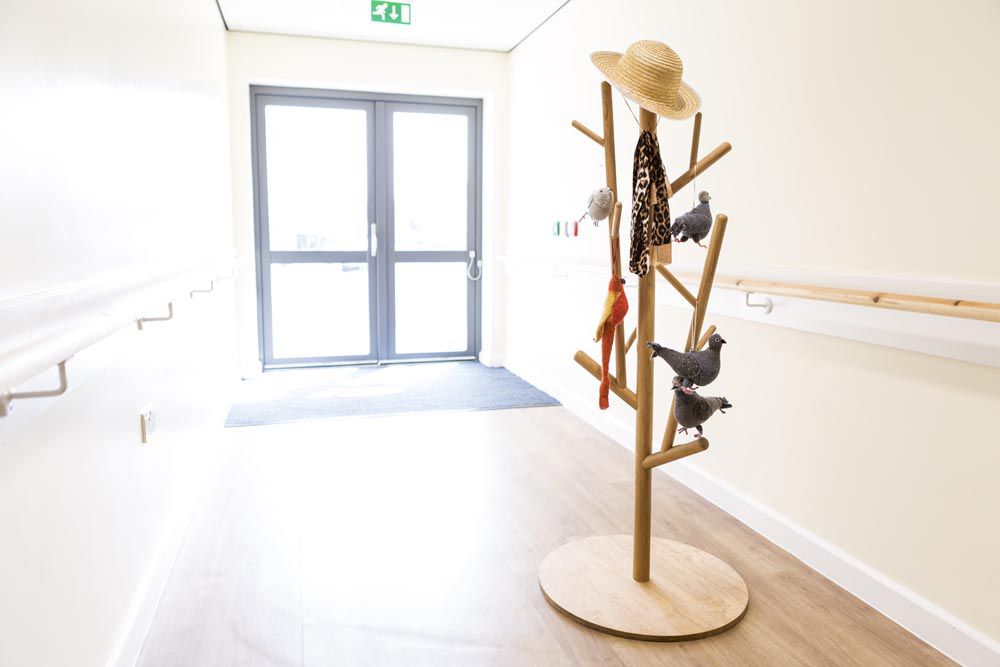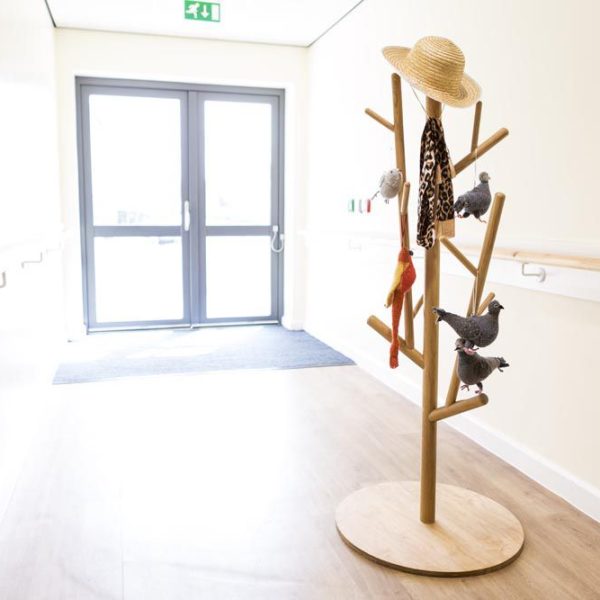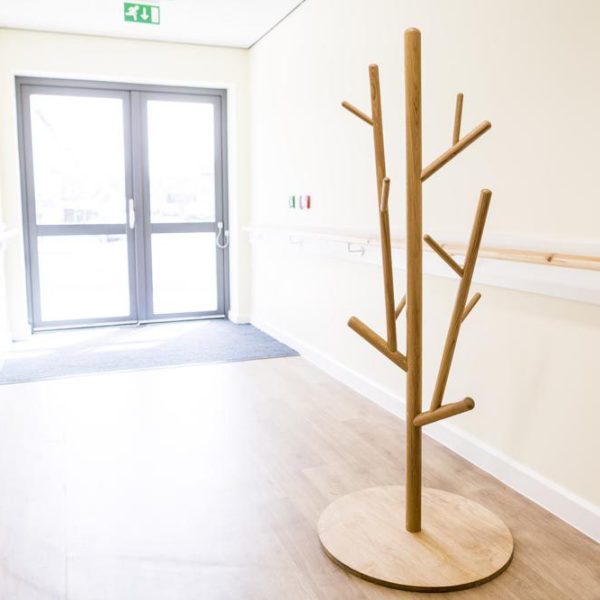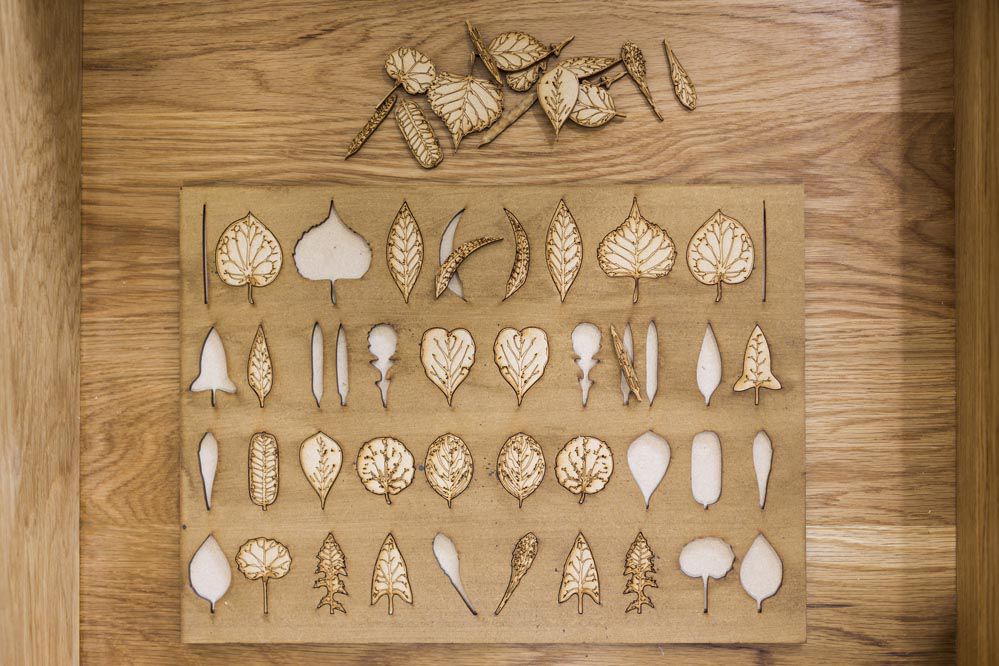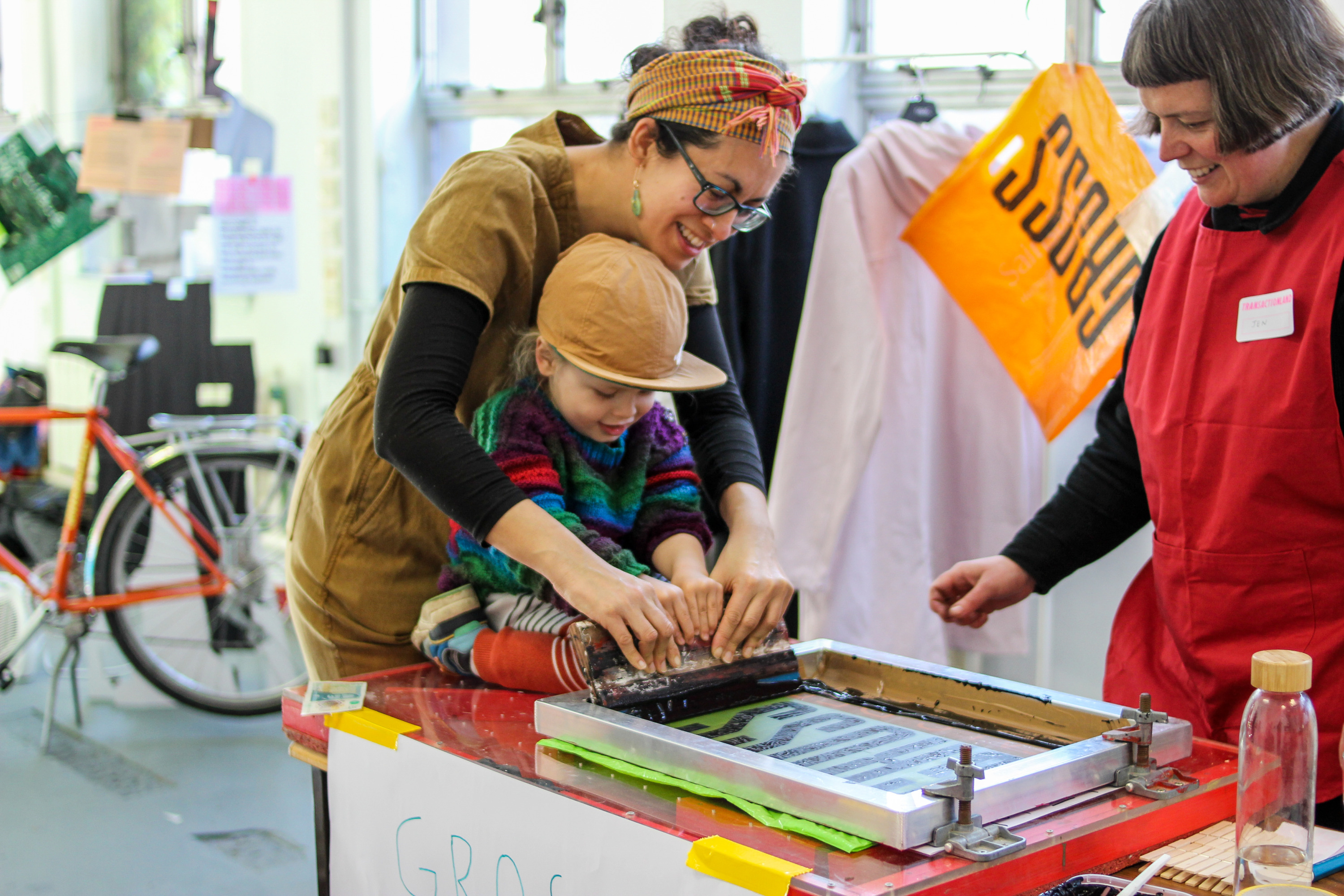
Synopsis
What does ‘home’ mean to you if you are a person living with dementia? Maybe it’s where you were born or grew up – a suburb of Bristol, a village in the Punjab or a small town in Jamaica? Chances are it is where you have been happiest among family and friends. Could it be the residential care home where you now live?
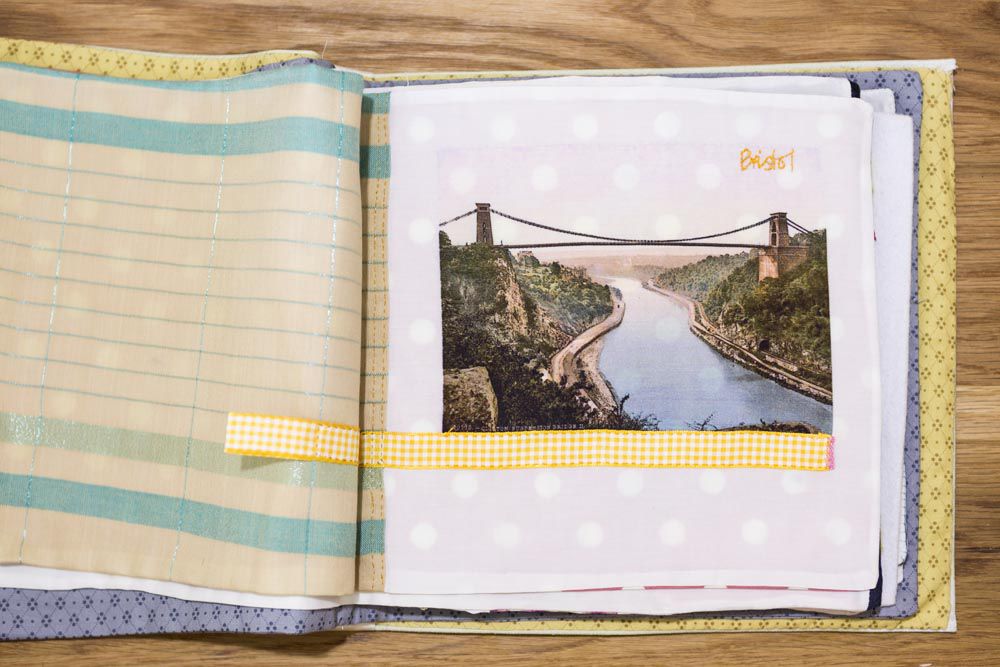
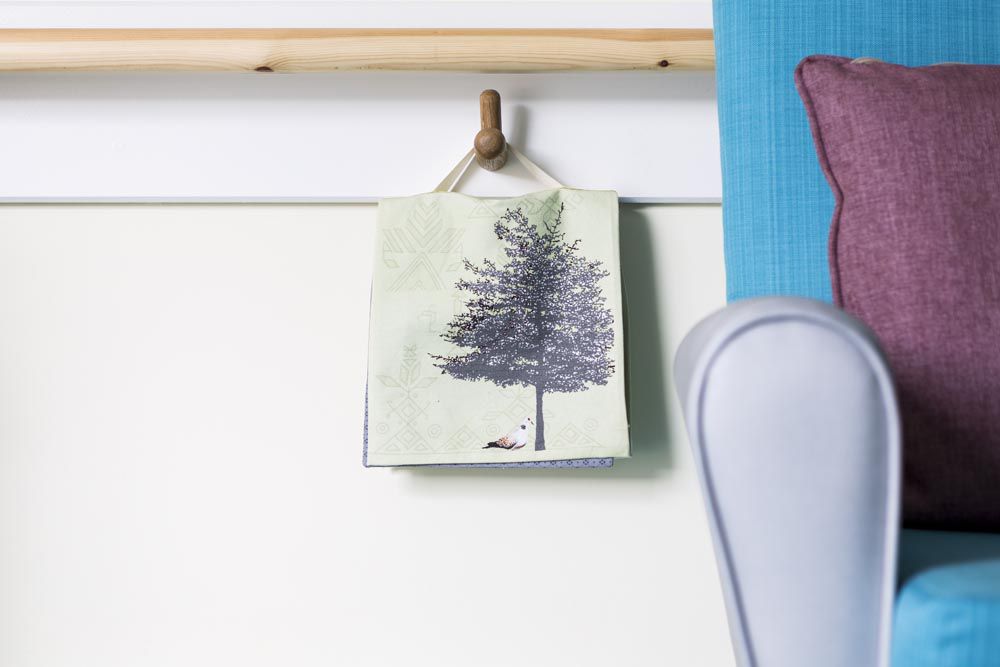
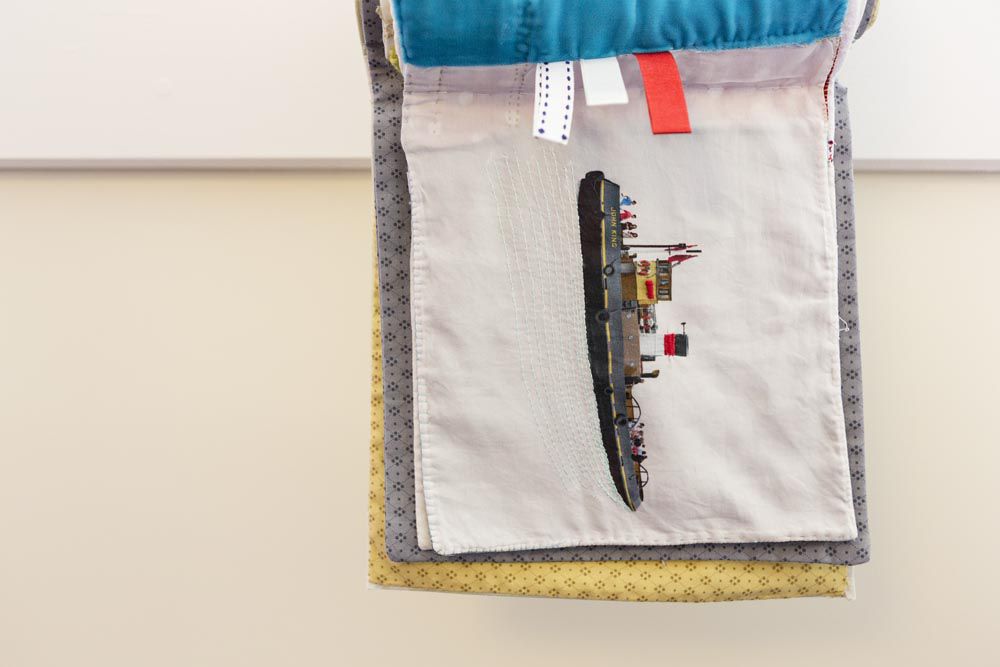
The ‘Home’ project explored these questions and ideas and in delivering it artist Deirdre Nelson spent a week as artist in residence at Brunelcare’s former care home, Saffron House. She got to know residents, involved herself with daily activities and shared conversations with those who lived and worked there. In doing so, she became aware of the important role played by textiles in the daily lives of residents, in terms both of clothing and their use in the environment, in napkins and tablecloths for example.
The work she created in response is both interactive and tactile. Exploration of visual and tactile stimulus lead to the development of fabric ‘sample’ books and a migratory flock of textile birds, both of which can travel throughout the space with residents, or be held and touched by residents who are less mobile. The flock of birds has been created using soft natural yarns (silk, cotton, angora and wool) and embroidered to provide detail and additional tactile surfaces. Their colour and markings relate to species found in Jamaica, Punjab, Somalia and other countries relevant to the residents in the Bristol home.
In collaboration with Helen Kalmijn, Nelson also developed ideas for a series of tree hat stands. These act as a prompt from inside to outside and are both a sculptural and a useful addition to the home, allowing residents to hang clothes and objects.
Nelson’s work has developed a further life of its own, with The Napkin Project, an innovative initiative that is using social media to harness public creative skills to raise awareness of the importance of creativity in the daily lives of those living with dementia, and in the techniques that can be used in caring for them.
Nelson graduated from Glasgow College of Art in 1992, having studied embroidery and woven textiles. She then became involved in many community, health and education projects and taught a portfolio course at Glasgow’s Tramway for ten years. This has made her a practitioner in tune with the issues that arise from working with different people, aware of the “need to balance her own personal and art form development with the sensitivities and priorities of the people she works with”.
She later completed a Master’s degree in Philosophy. This research-based course allowed her to develop her arts practice, and research now plays a central role in the development of her work.
Willis Newson is a leading Bristol-based independent arts consultancy specialising in creative approaches to improving health and wellbeing. It develops public art strategies for new builds and refurbishments, develops and manages public art plans and public engagement programmes, delivers training for artists and performers in healthcare settings and provides advice and guidance on the design and implementation of projects to promote healthy environments and improve health and wellbeing.
Cove Park Documentary – Summer 2010 from Cove Park on Vimeo.

